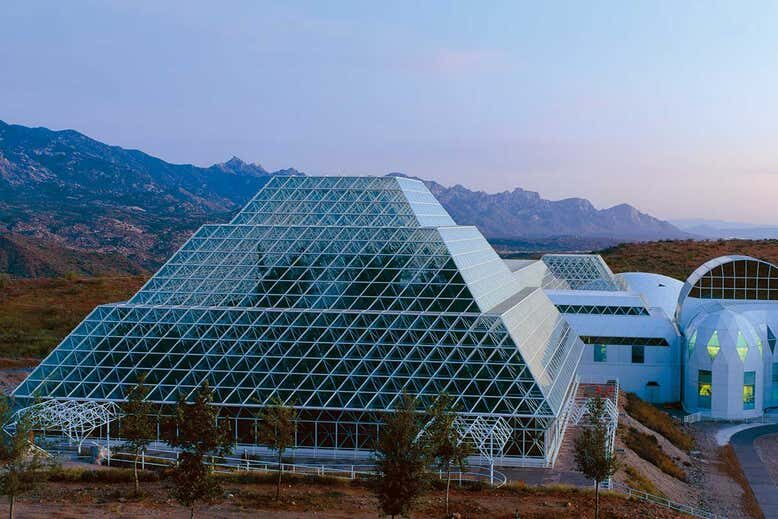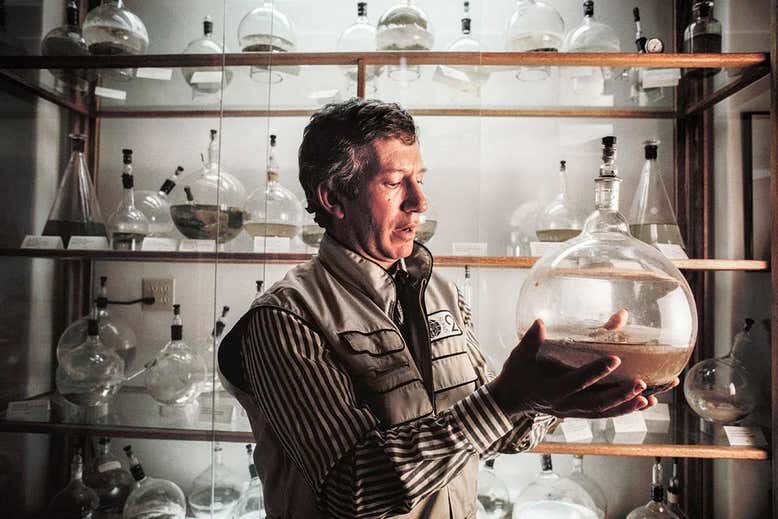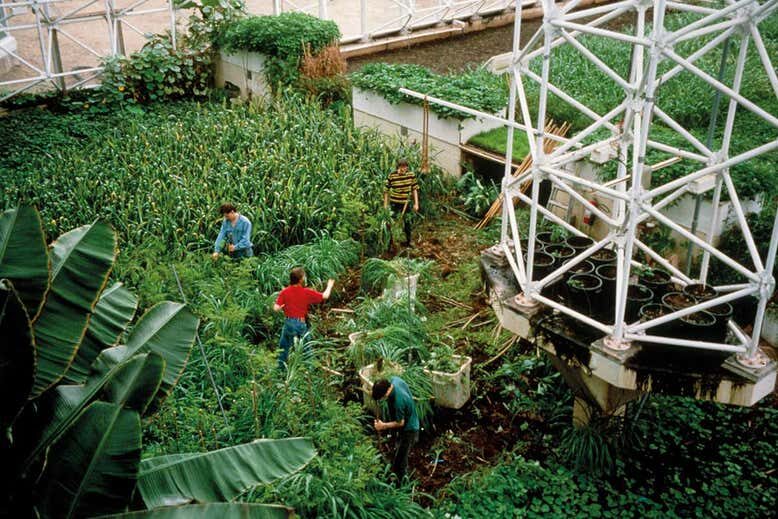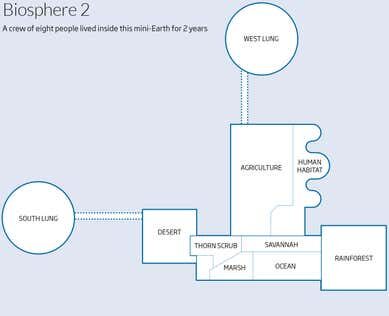
Indeed, disaster was never far away. We faced accumulating carbon dioxide and disappearing oxygen. We risked being choked by pollution or starved by crop failures. Some critics thought our experiment would be over within months. But we persevered.
We called our 3-acre ecosystem in the Arizona desert Biosphere 2. It was an attempt to create a new type of laboratory for studying global ecology, by replicating features of Biosphere 1 - better known as Earth.
My abiding memory is the visceral connection we felt with the living organisms that were inside with us. They were our life-support system as much as our technology was. The feeling of connectedness was profound. Inside our sealed habitat, everything we did had swift consequences. We joked that we had entered a time machine: because of its small size and the intensity of life inside, everything happened much faster than outside.
Inspiration for the project lay with Russian geochemist Vladimir Vernadsky, who pioneered understanding of how Earth's biosphere controls fundamental planetary processes, like the carbon and water cycles. The idea of creating life-support systems for space travel was also part of our vision. I had been pursuing these ideas with the Institute of Ecotechnics, a body I helped start 20 years before. And one of my collaborators, Texas oilman Edward Bass, financed Biosphere 2.
In our bonsai world, we worked as farmers, engineers, technicians, researchers, even chefs. We were mavericks and defied some scientific conventions, not least because we were part of the experiment, not researchers observing from afar. We combined the technical and ecological - and also the cultural. We wrote poems, made music and films, and shared paintings with outside artists.
Stellar ambition
In such a radical venture, disagreements were inevitable. Our engineers had wanted a purely functional architecture, but we wanted it inspirational. We ended up building a stunning structure using geodesic domes, pyramids and Babylonian barrel vaults, with ceilings 25 metres tall to accommodate tree growth for a planned 100-year lifetime. This combination of futuristic architecture and a bunch of researchers sealing themselves off for years, in what we called a dry run for a space colony, captured the world's imagination.

We also needed outside assistance when oxygen levels inexplicably started falling. Sleuthing uncovered where the oxygen had gone: an imbalance between photosynthesis by plants and respiration by soil microbes led to the oxygen being converted to carbon dioxide, which was absorbed by the unsealed concrete of our habitat's structure. Discovering that was great science, but to keep ourselves healthy, we had to pump more oxygen in. We were pilloried in the press for this. Had they forgotten this was an experiment?
Perhaps they had, because Biosphere 2 was theatre as well as science. We were accused of turning ecology into Disneyland, but we took that as a compliment: we were making ecology sexy. Daring science excites people. In the process, though, Biosphere 2 became a media yo-yo: it was portrayed as either saving the world single-handedly, or as a pseudoscientific stunt. Of course, it was neither. Our two years under glass remains the largest, longest and most important experiment ever undertaken in creating a materially sealed world.
We lived the lesson that you cannot throw anything away because, ultimately, there is no "away". To that end, I literally had the shit job - I was in charge of recycling waste water by cleansing and recycling it in our constructed wetland. I loved that work. After Biosphere 2, I started a company installing green technology sewage-treatment systems around the world.
The ecosystems that we nurtured developed remarkably well, although our purpose was not to maintain them perfectly, but to see how they self-organised and developed. The trees in our half-acre rainforest grew from a couple of metres to more than 10 metres tall. Biomass doubled in the biomes. But we couldn't keep our patch of desert dry enough to stay a desert, and it turned into a kind of scrubby chaparral.
We also had a coral reef, which we anticipated might have a hard time. We had transplanted the coral from tropical lagoons to a thousand metres above sea level in southern Arizona. Then, high carbon dioxide levels developed inside our world and threatened to acidify the "ocean" waters. So we raised the pH with chemicals in a bid to save the corals. It was a nail-biter, but ultimately few reef species were lost, and new colonies formed. That was a lesson for the world: Biosphere 2 was dealing with raised CO2 levels and ocean acidification long before the outside world realised the same problem would arise on Biosphere 1.
Comment: Using Biosphere 2, a closed system, and making direct comparisons with life on Earth, an unimaginably dynamic planet moving through space, will obviously lead to some faulty reasoning and erroneous conclusions.
Biosphere 2 was a physiological and social experiment, too. The media wanted to know about our sex lives and about disputes inside. There were both. Early on, we split into two factions of four, although we continued working together and whenever there was a party, group tensions disappeared.
Our resident doctor was delighted that we followed his diet of low calories and high nutrients. But subsistence farming required 3 or 4 hours of hard work every day, and we lost weight. That, coupled with little oxygen, meant our bodies worked in slow motion. We only truly realised the difference when we eventually pumped in more oxygen. It was one of the most dramatic physiological revivals of my life. We laughed; we ran; we filled our lungs deeply.
Comment: Their diet according to wikipedia shows they were seriously lacking in animal products:
"The agricultural system produced 83% of the total diet, which included crops of bananas, papayas, sweet potatoes, beets, peanuts, lablab and cowpea beans, rice, and wheat.[17][18] Especially during the first year, the eight inhabitants reported continual hunger."
The biosphere experience showed me how urgently we need to change our paradigms for living on Earth, that we are not separate from nature, and that it can be deeply satisfying to recognise and celebrate our metabolic connection with the natural world.
It showed me that we need engineers to redesign our technosphere, so that we can stop destroying our beautiful Earth and begin regenerating it. And also that we need artists and writers and thinkers to help create a spiritual and cultural awakening, one that will allow us to become effective stewards not only of our planet but also of ourselves.





Comment: See also: